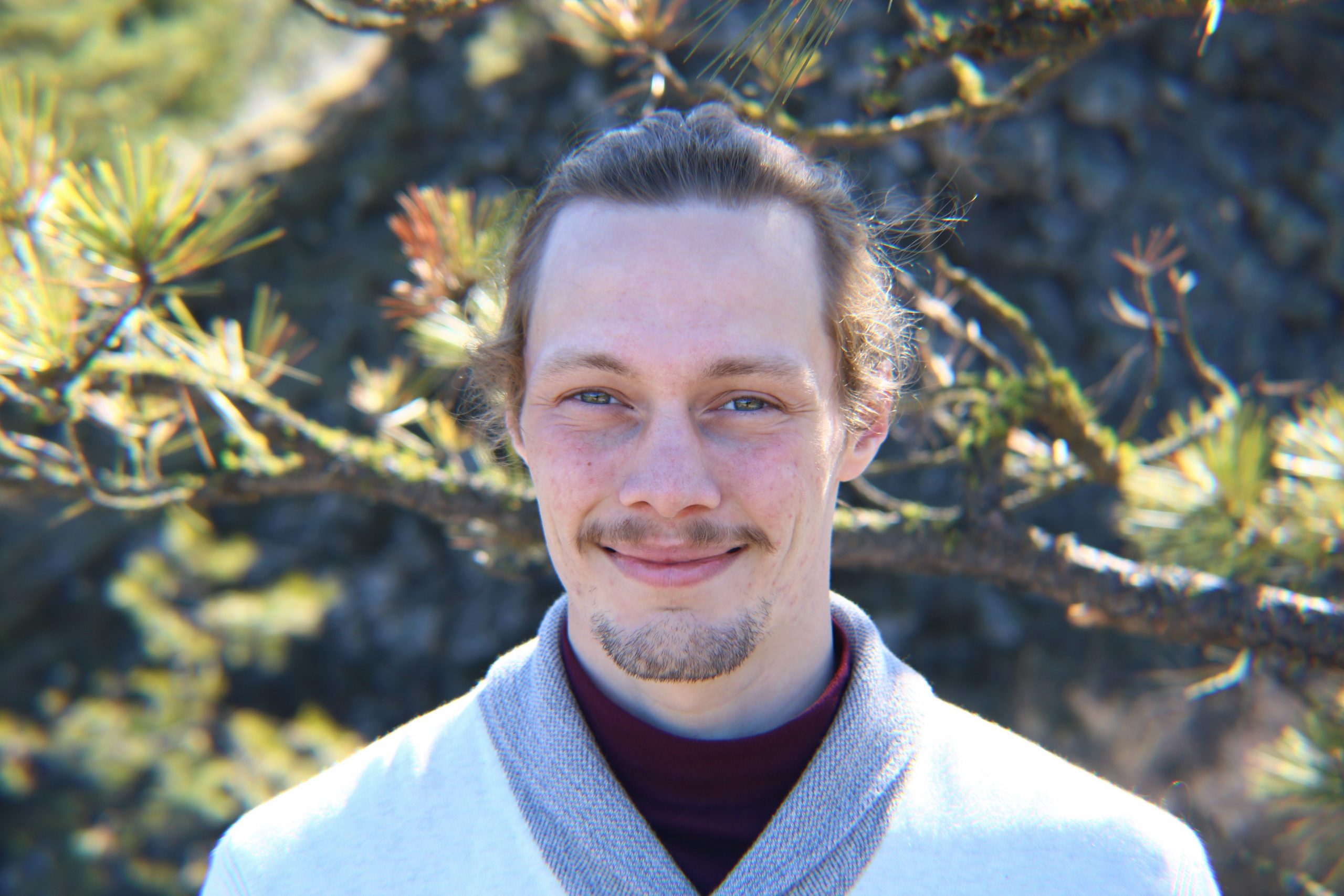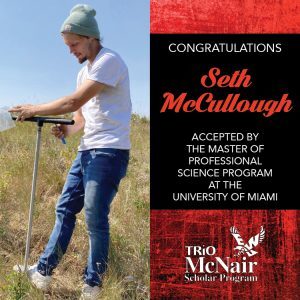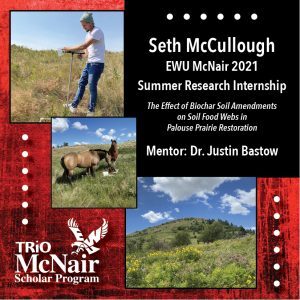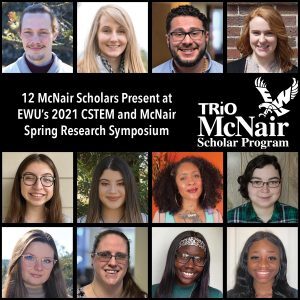
Seth McCullough graduated from Eastern Washington University with a double major in Environmental Science and Biology. Growing up in Tennessee, he spent a lot of time in the woods, which sparked his interest in the outdoors and in learning how ecological communities influence one another. Scuba diving further focused his interests on marine life and restoration. He worked on coral restoration in Bonaire and conducted fish surveys for REEF’s volunteer fish survey project. He is interested in restoration ecology and how climate change is affecting relationships within ecologic communities. He is an assistant in Dr. Bastow’s lab working on EWU’s prairie restoration project. His 2021 research made comparisons between soil abiotic properties and the soil food-webs within Palouse prairie remnants and EWU’s prairie restoration site, and to investigate how biochar amendments are impacting the soil food-web at EWU’s restoration site. He presented this research at the EWU McNair Summer Symposium and the 2022 Murdock College Science Research Conference. He hopes that one day his research will contribute to the fight against climate change and influence policy makers.
Seth was accepted with funding by the Master of Professional Science program at the University of Miami in the Marine Conservation track at the Rosenstiel School of Marine and Atmospheric Science as well as accepted by the Master of Science in Biology program at James Madison University with full funding as a teaching assistant. Seth began attending James Madison University starting in the Fall of 2022.
2021 EWU Faculty Research Mentors: Dr. Justin Bastow
Research Title: Effect of Biochar Soil Amendments on Soil Food Webs in Palouse Prairie Restoration
Abstract: Palouse prairie once covered 16,000 km2 of eastern Washington and northern Idaho, but less than 1% of the original vegetation remains because of conversion to agriculture. Due to this change the remaining Palouse prairie is highly fragmented. Eastern Washington University is planning to restore 130-acres of farmland back to native Palouse prairie. A 15-acre pilot site is being developed to test the effectiveness of several different restoration techniques. The goals of this project were to make comparisons between soil abiotic properties and the soil food-webs within Palouse prairie remnants and EWU’s prairie restoration site, and to investigate how biochar amendments are impacting the soil food-web at EWU’s restoration site. Soil food-webs play a major role in regulating carbon and nutrient cycling within the soils, and they are a large component of terrestrial ecosystems. Field sampling methods included collecting soil from three Palouse prairie remnants and EWU’s prairie restoration site, within 4 days of each other, during June and July. Nematodes were used as biological indicators of the soil food-web in this study. Nematodes are great indicators of soil food-web conditions because nematodes are found in all the major channels of the soil food-web and multiple trophic levels. Nematodes were sorted by functional group to get an idea of the functional diversity in the soil food-web among the sites. EWU’s restoration site is significantly different in terms of nematode abundance and some abiotic soil properties including pH and moisture retention. Nematode abundance and pH increased significantly at the EWU site with the addition of biochar, both increasing to conditions similar to what is found at the prairie remnant sites. Results from this research can be used by EWU to monitor the progress of the restoration and can help in future decision making surrounding the project.









